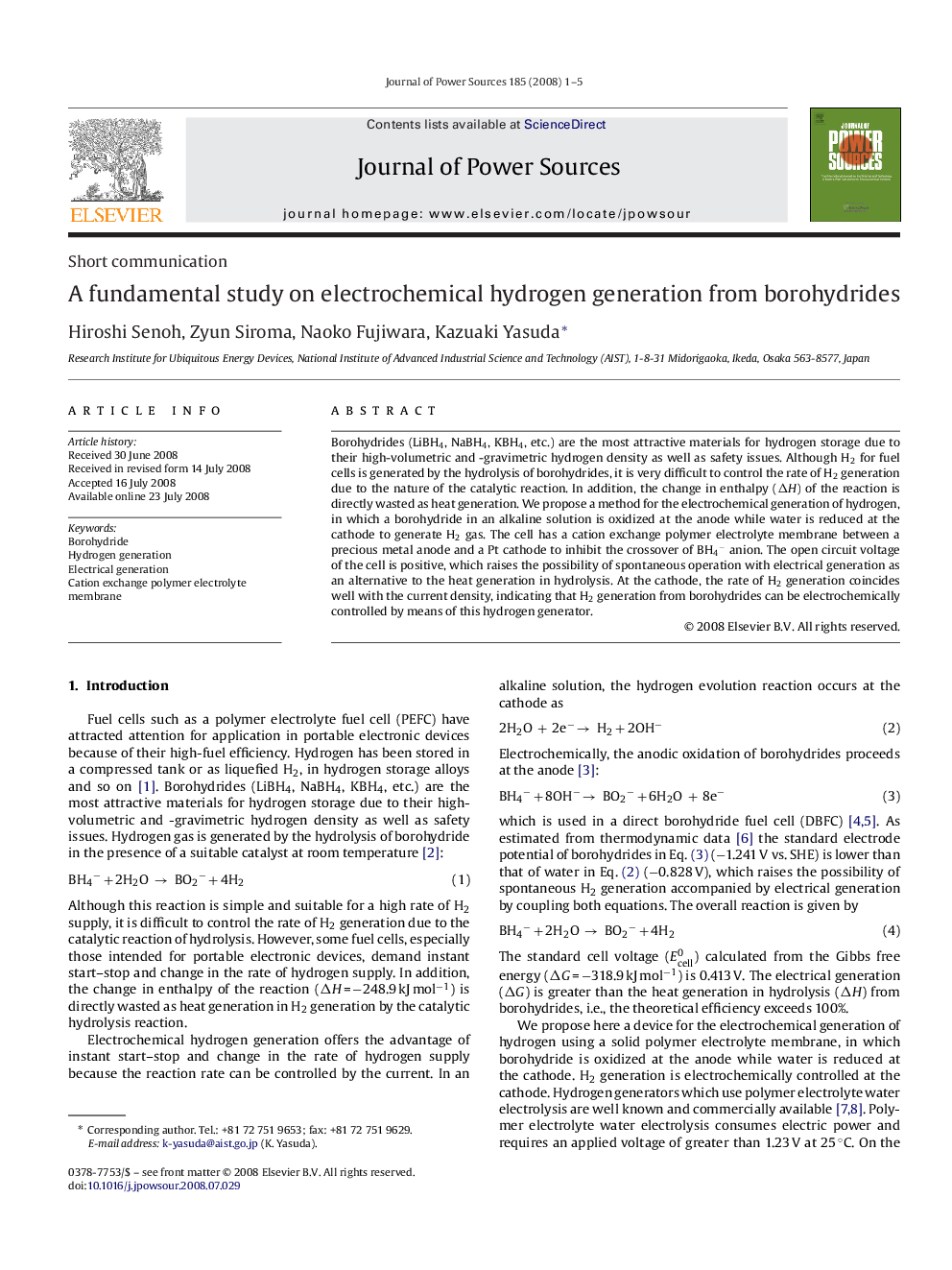| Article ID | Journal | Published Year | Pages | File Type |
|---|---|---|---|---|
| 1294373 | Journal of Power Sources | 2008 | 5 Pages |
Borohydrides (LiBH4, NaBH4, KBH4, etc.) are the most attractive materials for hydrogen storage due to their high-volumetric and -gravimetric hydrogen density as well as safety issues. Although H2 for fuel cells is generated by the hydrolysis of borohydrides, it is very difficult to control the rate of H2 generation due to the nature of the catalytic reaction. In addition, the change in enthalpy (ΔH) of the reaction is directly wasted as heat generation. We propose a method for the electrochemical generation of hydrogen, in which a borohydride in an alkaline solution is oxidized at the anode while water is reduced at the cathode to generate H2 gas. The cell has a cation exchange polymer electrolyte membrane between a precious metal anode and a Pt cathode to inhibit the crossover of BH4− anion. The open circuit voltage of the cell is positive, which raises the possibility of spontaneous operation with electrical generation as an alternative to the heat generation in hydrolysis. At the cathode, the rate of H2 generation coincides well with the current density, indicating that H2 generation from borohydrides can be electrochemically controlled by means of this hydrogen generator.
